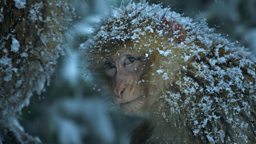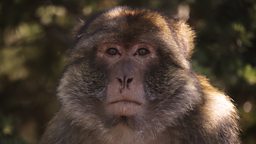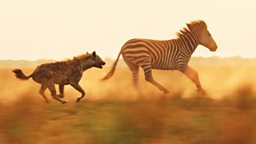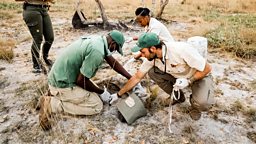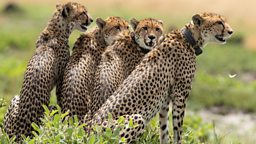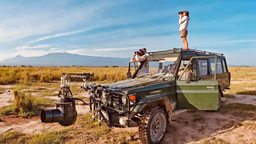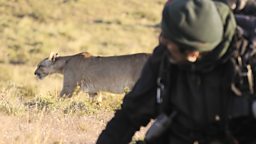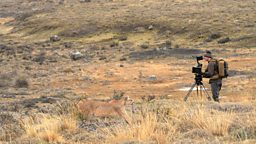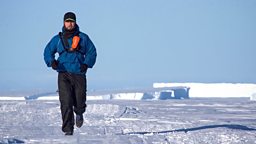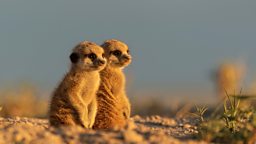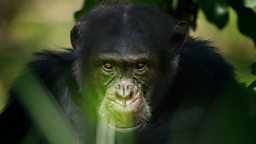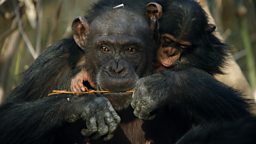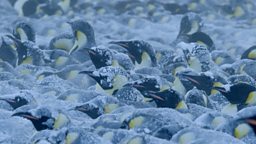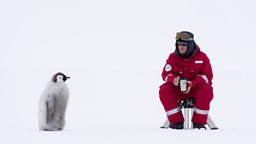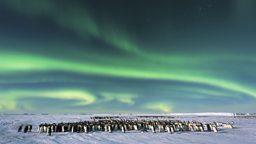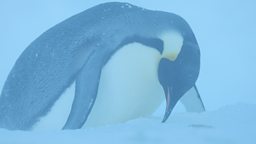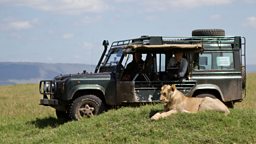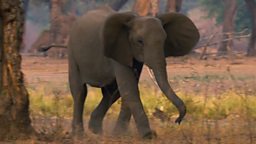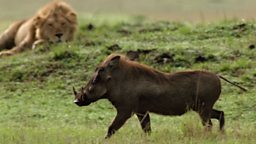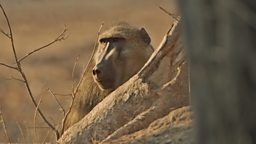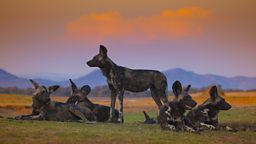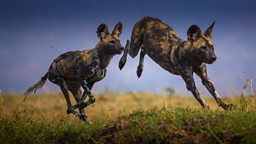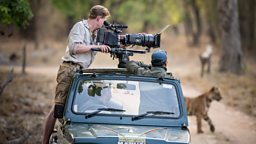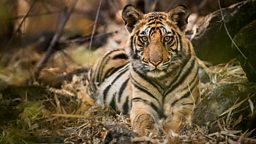Capturing the aurora
By Will Lawson

Anyone visiting the Poles hopes to see the Northern or Southern Lights and the film crew in Antarctica for 大象传媒 Dynasties was no different. Our dream was to film the penguin colony going about their normal activity while an aurora display was happening overhead.
Monitoring the sunspots and solar activity became a big part of our general research. But that was only one piece of the puzzle.
Aurora activity is related to sunspots, which follow a cycle. Unfortunately for us, 2017, the year we were in Antarctica, coincided with a lull of sunspot activity, which reduced our opportunities of seeing auroras.
Monitoring the sunspots and solar activity became a big part of our general research. But that was only one piece of the puzzle. We also needed clear skies and Antarctica is not known for its settled weather conditions.
Lastly, we wanted a full moon to cast enough light on the penguins so that we could see them clearly using our special low-light cameras.
For those three things to work out during a dud year for aurora activity was going to be tricky! We monitored as much as possible. Sometimes there would be small auroras but the cloud cover would come in or it wouldn’t be a full moon. As the weeks and months passed, and the polar night came to an end, it looked very unlikely that we were going to succeed, which felt incredibly disappointing.
By this point, the sun had returned so the days were getting longer and the nights shorter. We worked out that we had one more opportunity in August to have enough darkness to film the aurora and have a full moon. The chances were slim!
I could not believe what we were seeing. It was a huge curtain of green, yellow, pink and white, rippling along the sky, as if it was blowing in the wind.
Not long before the full moon was due, an unusual space weather warning came through: an enormous solar flare had been recorded, the largest in over a decade! We could not believe it! We put everything on hold, stopped filming during the day and got all our kit ready that we'd be using at night. We prepared ourselves to sit in our containers by the colony each night and wait.
The first night the cloud rolled in and it was a complete write-off. The second night, the sky was crystal clear, it was full moon, and slowly but surely we saw a faint green glow on the horizon. We sprung up, threw on our polar gear as quickly as possible, jumped on our skidoos and headed to the penguin colony. A green haze started to form into the characteristics wavy patterns of the aurora. All we needed was the aurora to be strong enough to out-compete the moon! We waited and we waited. Lindsay McCrae, the cameraman, set up the low light camera. As he finished, Stefan Christmann, the camera assistant, made some sort of exclamation making us look up. I could not believe what we were seeing. It was a huge curtain of green, yellow, pink and white, rippling along the sky, as if it was blowing in the wind. Usually the aurora is just over the southern portion of the sky, but it was so strong it spread across, right over the penguin colony itself, even around the moon, which had a green glow around it.
We were hoping the penguins might be looking up in awe just like we were! But they didn’t seem fazed at all. A couple looked like they might have been recognising that something was happening but they were continuing with their activity as normal - walking backwards and forwards on the sea ice, exchanging a chick to the other adult, or heading off to fish again - while the three of us were open mouthed in utter shock and awe. We were laughing because we couldn’t believe what we were seeing! The speed of movement in the aurora's ‘curtains’ and the range of colours were breathtaking - something that is only possible from a particularly strong aurora. The most intense part of the event lasted for just 20 short minutes. I knew that in all likelihood I would never see another natural phenomena that would beat what we’d just experienced!
